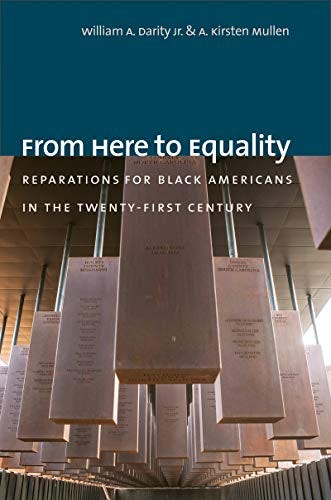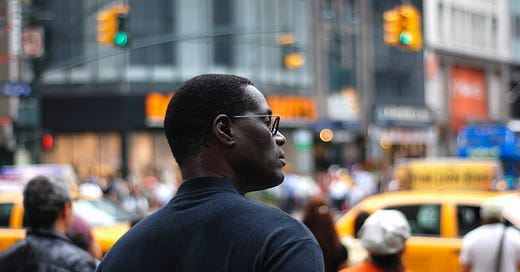Reparations, Raw Talk, and Racial Progress

The racial climate in the U.S., let’s just call it raw. People speaking their truths. Resentments surfacing. Vitriol and hate in full bloom.
Will this ultimately be good for America? Well, that remains to be seen. But I remain hopeful that despite how ugly things may appear at times, this rare period of openness will yield meaningful progress.
With what I’ve witnessed over the past three weeks, I am now of the opinion that pervasiveness of racism in the U.S. is exponentially far worse than I would have ever imagined in my wildest dreams.
Many believe that we’re falling into a backward slide as a nation. Whenever I hear this I say that it’s metaphorically like backing a car out of a driveway.
“You’ve gotta put a car in reverse and back up before shifting to drive so you can accelerate forward.”
What’s been particularly striking to me in my conversations of late is the disgustingly inaccurate notion that we live in a post-racial society. It’s been fascinating to witness how bigotry that has been swept under the rug for hundreds of years is now surfacing like an infectious puss needing to be drained.
So how do we repair the damage? I believe it begins with an acknowledgment of the deep historical context behind where we find ourselves today in terms of our nation’s racial climate.
Unfortunately, what I see among many particularly of the conservative ilk is a defensive posture and stubborn refusal to acknowledge the ugly stain of this historical past.
One person I’ve come to deeply admire for his willingness to dig deeper into this uncomfortable space is former Speaker of the House and staunch conservative Newt Gingrich.
In a surprise statement back in 2016, he remarked:
“It took me a long time, and a number of people talking to me through the years, to get a sense of this: If you are a normal white American, the truth is you don’t understand being black in America and you instinctively under-estimate the level of discrimination and the level of additional risk.”
The reality is that Black Americans are constantly subjected to the systemic sting of racism and economic inequities deeply rooted in slavery and Jim Crow. We are seeing this in housing discrimination, mass incarceration, police incidents, employment discrimination, unequal education, and massive wealth and opportunity gaps.
Stories exposing racial ignorance are often so absurd that they baffle the imagination. Here is what some Black company founders shared about the racial milieu in Silicon Valley.
The good news is that now these festering issues are being brought out into the open. That’s why I remain hopeful about progress in bridging this race gap.
Racial Reconciliation Begins With Acknowledgement
Slavery. Jim Crow. Injustice. Repression. We are now at a moment of truth in America. For until we fully acknowledge these moral debts through honest and raw dialogue, America will never be true to its Constitutional values.
One of the most contentious themes garnering increased attention these days is whether Black American’s should receive reparations as acknowledgment and redress for past racial injustice. Two prominent voices in this debate are journalists Ta-Nehisi Coates and David Brooks.
Coates, national correspondent for The Atlantic on culture, politics, and social issues is known for a feature story he wrote back in 2014 entitled The Case For Reparations.
Brooks, a Canadian-born American conservative political and cultural commentator and op-ed writer for The New York Times raised some eyebrows a couple of years ago when he endorsed Coates’ call for reparations.
Now in a very timely book entitled From Here to Equality, William Darity Jr. and A. Kirsten Mullen address racial injustice head-on by proposing a roadmap of economic reparations for U.S. slavery descendants.
Darity is the Samuel DuBois Cook Professor of Public Policy, African and African American Studies, and Economics at Duke University. His co-author A. Kirsten Mullen is a writer, folklorist, museum consultant, and lecturer whose work focuses on race, art history, and politics.

As the authors’ note in the book introduction:
“The ultimate goal of “From Here to Equality” is to help rejuvenate discussions about and to promote reparations for African-Americans.”
“Reparations have been used strategically in the United States and throughout the world to provide redress for grievous injustices. These include the U.S. government’s provision of reparations for Japanese Americans unjustly incarcerated (interned) during World War II, the German government’s provision of reparations for victims of the Nazi Holocaust, and the Canadian government’s provision of compensation to indigenous peoples who were removed forcibly from their families and confined to Christian, church-run, Indian residential schools.”
Darity and Mullen define reparations as a program of acknowledgment, redress, and closure for grievous injustices including slavery, legal segregation (Jim Crow), and ongoing discrimination and stigmatization.
The book begins with an eye-opening look at the present and past inequalities born of slavery including the adverse impact that white supremacy has had on black economic well-being. Employing innovative methods tying monetary values to historical wrongs, the authors offer an assessment of the literal and figurative costs of injustice during the 155 plus years since the end of the Civil War.
In Chapter 2 entitled Myths of Racial Equality, the authors reflect on the structural dynamics that have hindered black social and economic progress:
“It is important to acknowledge that whites control political and economic power in this country. No shift in the power relationship will be possible unless the society as a whole takes action to transform the structural conditions to make racial equality a real possibility. Given the existing distribution of financial and real resources, blacks cannot close the racial wealth gap by independent or autonomous action.”
Darity and Mullen then offer this:
“One powerful example that challenges the thinking of those who prefer America’s feel-good myth of equality is provided by a close analysis of wealth disparity in this country. Wealth is the best single indicator of the cumulative impact of white racism over time.”
Here are a few examples of statistics cited in their book they say support remedies:
“Data from the 2016 Survey of Consumer Finances indicates that the median black household net worth ($17,600) is only one-tenth of white net worth ($171,000). That means, on average, that for every dollar the middle white household holds in wealth — measured by assets like homes, cash savings, and retirement funds — the middle black household possesses a mere ten cents.”
“Older single black women with a bachelor’s degree have a medium net worth of about $11,000, while single white women with a college degree, in the same age, range, have $384,000 in medium net worth.”
“In 2014, the top 100 black-owned firms identified by Black Enterprise magazine grossed slightly less than $30 billion —- as a group. In comparison, the top-revenue generating white owned corporation, Walmart, grossed $482 billion, sixteen times the combined revenue of the top 100 black owned firms.”
“A Bloomberg study on MBA recipients reveals that blacks receiving MBAs from Harvard Business School between 2007 and 2009 started their careers earning about $5,000 less than their white peers with degrees from the same program. But by 2015 the racial pay gap for the Harvard MBA recipients had ballooned to a shocking $100,000 annually.”
In the end, Darity and Mullen provide a comprehensive set of discussion points for employing an effective reparations program, including a substantial payment to each documented U.S. black descendant of slavery. Anyone of the three inflection points outlined by Darity and Mullen — slavery, Jim Crow, and modern-day discrimination — offers a powerful argument for black reparations. Viewed collectively, they are impossible to dismiss.



